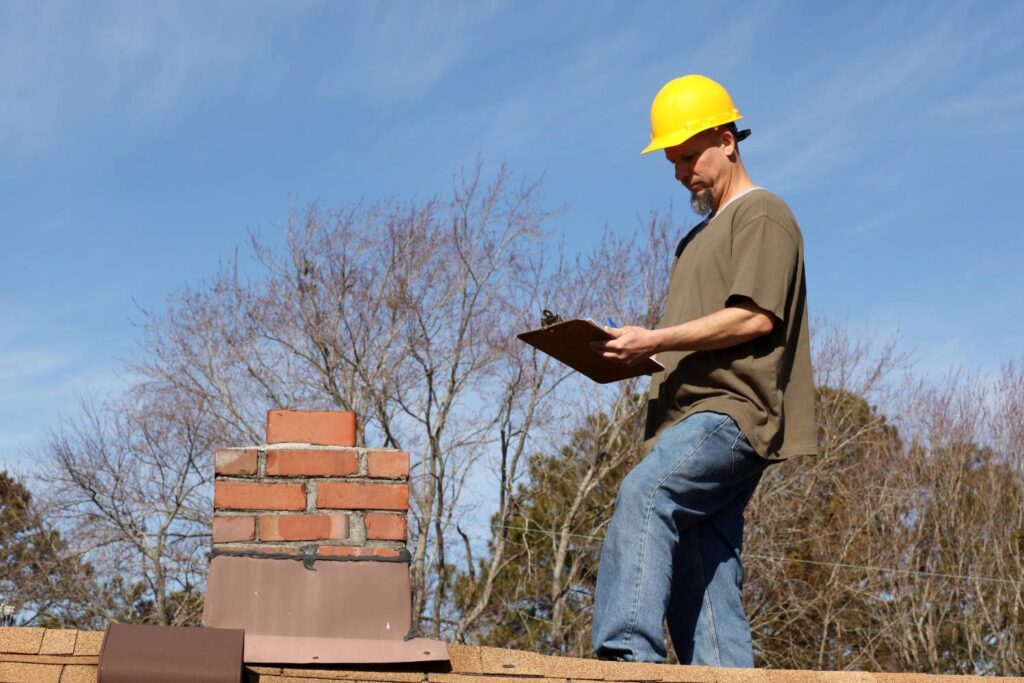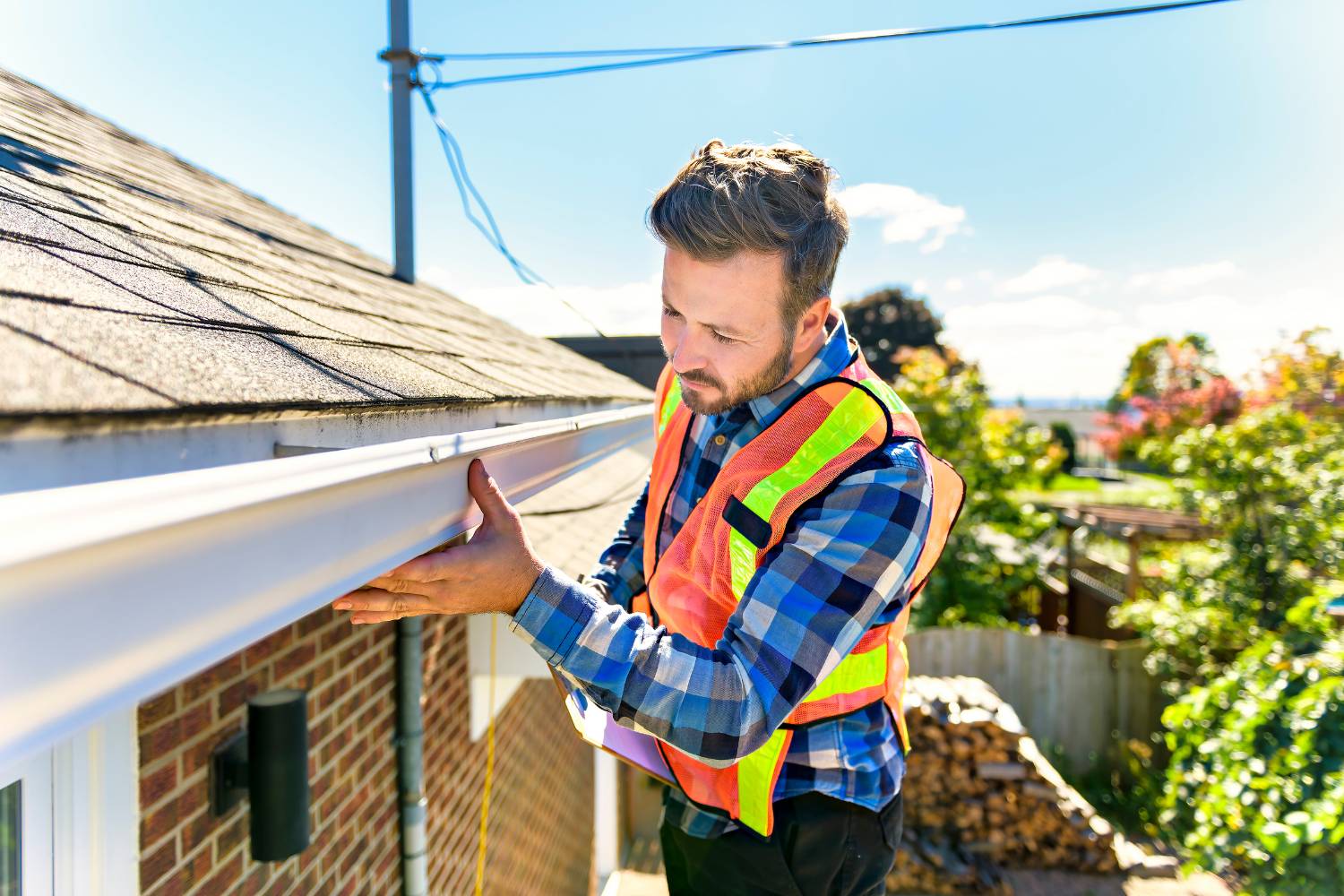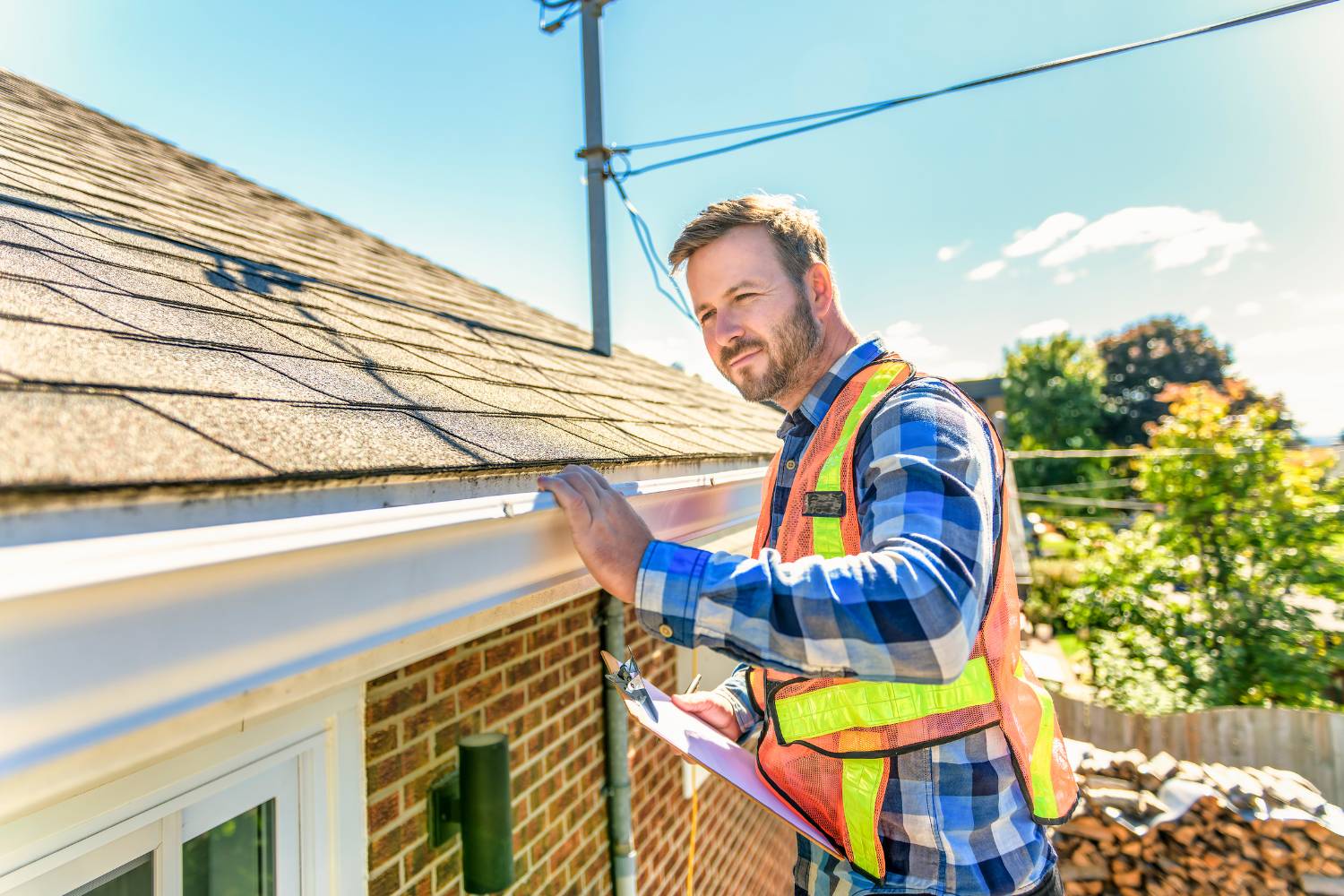Roofs are essential for protecting homes from the elements, yet they often receive less attention than they deserve until a problem arises. Roof inspections and assessments are vital first steps in ensuring the longevity and effectiveness of this crucial component of your home.
By regularly evaluating the condition of your roof, you can identify potential issues before they escalate into major problems, ultimately saving time, money, and stress.
This blog will guide you through the importance of roof inspections, the signs that your roof needs an inspection, the tools and techniques used during the process, and what to expect from a professional roof inspection.
Additionally, we will explore how thorough roof assessments lead to effective restoration, ensuring your roof remains in top condition for years to come.
What are the Key Signs that Your Roof Needs an Inspection?
Maintaining your roof is crucial for safeguarding your home from the elements. Regular inspections can prevent minor issues from turning into major problems. Here are the key signs that your roof needs an inspection, with a detailed explanation of each sign:
Missing Or Damaged Shingles
- Cracks, Curling, or Missing Pieces: Shingles act as the first line of defence against the weather. When they are cracked, curled, or missing, it compromises the roof's ability to protect your home from water infiltration, leading to potential leaks and water damage.
- Holes or Cracks: These visible imperfections can serve as entry points for water and pests. Over time, even small holes or cracks can grow larger due to wind and weather, exacerbating the problem.
Clogged Or Damaged Gutters
- Overflowing or Clogged Gutters: When gutters are blocked, water can overflow and run down the exterior walls, causing damage to the siding and even the foundation. Persistent gutter issues can lead to serious structural damage if not addressed promptly.
- Water Stains on Ceilings or Walls: The presence of water stains inside your home is a clear indication that water is penetrating the roof. These stains can be wet or dry and often appear brown or yellow. They suggest that water has found its way through the roof's layers, potentially leading to mould growth and structural damage.
Granule Loss
The small, sand-like granules on asphalt shingles protect the roof from UV rays and provide fire resistance. Finding these granules in your gutters, especially after a storm, indicates that your shingles are deteriorating and losing their effectiveness.
Sagging Roof
A sagging roof is a severe issue that indicates significant water damage and potential structural weakening. This can lead to further sagging and even collapse if not addressed immediately.
Uneven Roof Lines
Uneven or sagging roof lines are often a sign of deeper structural problems. These issues can arise from prolonged water damage, inadequate support, or the shifting and settling of the house's foundation.
Old Age
Most roofs have a lifespan of 18-22 years. As roofs age, the materials can become brittle, worn, and less effective at protecting your home. Regular inspections can help you plan for necessary repairs or a complete roof replacement before significant issues arise.
Storm Damage
Severe weather such as hail, strong winds, and heavy rain can cause immediate and visible damage to your roof. Inspecting your roof after such events can help identify any damage that needs urgent repair.
Visible Damage From Tree Limbs
Strong winds or storms can cause tree limbs to fall onto your roof, leading to significant damage. Even small branches can cause problems if they dislodge shingles or damage the roof structure.
Moss Or Algae Growth
Moss and algae thrive in moist environments. Their presence on your roof indicates that there is excess moisture, which can lead to decay and compromise the roofing materials. Algae can appear as black streaks, while moss can form thick green mats that retain moisture against the roof surface.
What Tools and Techniques are Used in Roof Inspections?
Roof inspections have evolved significantly over the years with the advent of new technologies. These advancements have made it easier to accurately assess the condition of roofs and identify potential issues early on. Below, we explore various tools and techniques used in modern roof inspections.
Drones
Drones equipped with high-resolution cameras are widely used in roof inspections to capture detailed images and videos from various angles. They provide a comprehensive view of the roof's surface, allowing inspectors to identify areas of damage or wear that are not visible from the ground.
Drones are particularly useful for inspecting large or complex roofs, such as those on commercial or industrial buildings. They can cover a large area quickly and efficiently, making the inspection process more accurate and less time-consuming.
Infrared (Ir) Scanners
Infrared (IR) scanners detect temperature differences on the roof's surface, which can indicate areas of moisture intrusion or insulation deficiencies. By capturing thermal images, these scanners help identify potential water damage and leaks that are not visible to the naked eye.
IR scanners are also useful for detecting insulation deficiencies, which can lead to energy inefficiencies and higher heating and cooling costs. The ability to pinpoint these issues early allows for timely corrective action, preventing more significant problems down the line.
Moisture Metres
Moisture metres measure the moisture content of roofing materials such as insulation, plywood, and drywall. These devices are essential for detecting areas of potential water damage, which can compromise the structural integrity of the roof.
During an inspection, moisture metres are used to take readings at various points on the roof's surface, as well as inside the building's walls and ceilings. This information helps inspectors assess the extent of any existing damage and identify the source of moisture, enabling them to take appropriate corrective measures.
Satellite Imaging
Satellite imaging provides detailed images of the roof's surface, which are particularly useful for assessing the condition of large commercial or industrial buildings. By offering a bird's-eye view of the roof, satellite imaging allows inspectors to identify areas of damage or wear from a distance.
This technology is invaluable for planning and conducting roof maintenance on large-scale buildings, providing exact dimensions and highlighting potential hazards such as loose or unstable roofing materials without the need for physical access to the roof.
Thermal Imagers
Thermal imagers convert infrared radiation into visible light, allowing roofers to detect hidden problems such as moisture buildup and insulation gaps. These devices provide accurate readings that help in early problem detection. Thermal imaging is especially useful for identifying issues that are not visible to the naked eye, such as areas where moisture has penetrated the roofing materials or where insulation is insufficient.
Non-Destructive Testing Methods
Non-destructive testing methods, such as infrared thermography, electrical capacitance, and nuclear detection, are used to measure moisture levels without damaging the roof. Infrared thermography, in particular, is favoured for its ability to scan the entire roof and detect temperature differences that indicate moisture presence. This method allows technicians to sample the roof comprehensively, making it more efficient and cost-effective than other testing methods.
Destructive Testing Methods
Destructive testing methods, including core sampling and moisture probes, are used to verify the accuracy of non-destructive methods by taking physical samples of the roofing materials. These methods provide detailed analyses of the roof's condition, helping to confirm findings from non-destructive tests and ensuring a thorough assessment of potential issues.
What Should You Expect During A Professional Roof Inspection?
A professional roof inspection is crucial for maintaining the integrity and longevity of your home’s roof. Regular inspections help detect potential issues early, preventing costly repairs down the line. Here’s a detailed look at what you can expect during a professional roof inspection.
Initial Assessment And Planning
Before the inspection begins, the inspector will gather information about your roof, including its age, materials used, and any previous repairs. This helps them focus on specific areas that might need extra attention. They will also assess the roof’s accessibility and plan for any potential challenges.
Interior Inspection
The interior inspection focuses on identifying signs of water damage and structural issues from inside your home, particularly in the attic. The inspector will check for proper insulation to ensure the attic is adequately insulated, which helps prevent heat loss and potential ice dams.
They will also assess the ventilation to ensure there is no moisture buildup, which can lead to mould, mildew, and rot. Additionally, the inspector will look for signs of leaks and water damage, such as water stains, mould growth, and rot, which indicate roof damage. Structural problems, such as sagging areas or visible light through the roof, will also be identified during the interior inspection.
Exterior Inspection
The exterior inspection involves a thorough examination of the roof’s surface and components. The inspector will assess the condition of the shingles, checking for cracked, curled, loose, or missing shingles, as these can lead to leaks and further roof damage. The flashing around chimneys, vents, and other roof penetrations will be checked to ensure it is intact and properly sealed, preventing water leaks.
Additionally, the inspector will examine the gutters to ensure they function correctly and look for granule buildup, which indicates shingle wear. The overall structural integrity of the roof will also be evaluated, including any sagging areas and the condition of the roof’s supporting structures.
Specialized Inspection Tools
Depending on the roof’s condition and accessibility, inspectors may use advanced tools such as infrared cameras to detect hidden moisture and potential leaks. Drones may also be employed to safely inspect hard-to-reach areas, especially on steep or unsafe roofs.
Post-Inspection Analysis And Report
After completing the inspection, the inspector will provide a detailed report outlining their findings. This report will include a summary of the inspection, highlighting any issues discovered, along with photos and detailed descriptions of each issue. The report will also offer recommendations for repairs, replacements, and maintenance practices to extend the roof’s lifespan.
What Happens After The Roof Inspection?
Once a roof inspection is complete, understanding the next steps is crucial for maintaining the health and longevity of your roof. Here’s a detailed look at what to expect and how to proceed after the inspection.
Review The Inspection Report
After the inspection, the roofing professional will provide a detailed report outlining the condition of your roof. This report typically includes photographs, descriptions of any damage or wear, and recommendations for repairs or maintenance. Reviewing this report thoroughly helps you understand the current state of your roof and what actions are necessary.
Ask Important Questions
It's essential to ask your roofer several questions to gain a deeper understanding of the inspection results and the recommended next steps:
- What’s the overall condition of the roof? This gives you a comprehensive assessment of your roof's health, including any visible signs of damage and the structural integrity.
- Are there any immediate repairs needed? Identifying urgent issues helps prevent small problems from becoming bigger and more expensive.
- How many more years can I expect from this roof? Understanding the expected lifespan of your roof aids in planning for future expenses.
- What are the potential problem areas to watch out for? Awareness of vulnerable areas allows for proactive monitoring and early intervention.
- Are there any preventive measures I can take? Implementing preventive steps, like regular gutter cleaning and trimming overhanging branches, can extend the life of your roof.
- How does the ventilation look? Proper ventilation is crucial for preventing issues like mould growth and ensuring energy efficiency.
- What kind of maintenance routine do you recommend? Regular maintenance helps keep the roof in optimal condition.
- In case of replacements, what materials do you suggest? Choosing the right materials based on durability, aesthetics, and cost is essential for future roof replacements.
- How does the insulation look, and how does it impact my home? Good insulation contributes to energy efficiency and comfort in your home.
- Are there any warranties or guarantees I should be aware of? Understanding the terms of any warranties ensures you know what is covered and for how long.
Plan For Immediate Repairs
Addressing any immediate repairs identified during the inspection is critical. Issues like leaks, missing shingles, or damaged flashing should be fixed promptly to prevent further damage. Delaying repairs can lead to more extensive and costly problems down the road.
Consider Long-Term Maintenance and Replacement
Based on the inspection report and the answers to your questions, develop a long-term maintenance plan. This plan should include regular inspections, routine maintenance tasks, and a timeline for potential roof replacement if necessary. Proactive maintenance helps extend the lifespan of your roof and avoid unexpected expenses.
Verify Warranties And Guarantees
If your roofing project includes any warranties or guarantees, make sure you understand the terms. This includes what is covered, the duration of the coverage, and any conditions or exclusions. Having this knowledge is invaluable if issues arise in the future.
Schedule Follow-Up Inspections
Regular roof inspections are vital for early detection of problems and maintaining the roof’s integrity. Depending on the age and condition of your roof, schedule follow-up inspections at least once a year, or more frequently if recommended by your roofer.
How Does Roof Assessment Lead To Effective Restoration?
A comprehensive roof assessment is the cornerstone of effective roof restoration. By thoroughly evaluating the condition of your roof, you can identify potential issues early, plan appropriate maintenance, and decide whether repair or replacement is necessary. This approach not only extends the life of your roof but also ensures its optimal performance. Here’s how a detailed roof assessment leads to effective restoration.
Understanding Roof Condition Assessments
A roof condition assessment involves a systematic evaluation of the roof’s current state. This process includes setting assessment parameters, understanding costs, scheduling, and reporting on findings. By assessing the roof's material resistance to aging and comparing its current condition to historical records, you can develop a clear plan for maintenance and restoration.
Identifying Trouble Spots
Roof assessments help identify various causes of degradation, such as ageing materials, weather damage, improper design, and natural disasters. By visually inspecting the roof, checking for debris buildup, and identifying membrane defects like punctures or separated seams, inspectors can pinpoint areas needing immediate attention. Using tools like thermal images and detailed history records, they can highlight improvements and necessary repairs.
Assessing Roofing Materials And Accessories
During the assessment, inspectors thoroughly check the roofing materials, including the deck, insulation, and waterproofing membrane. Key accessories like flashing, scuppers, drains, and sealants around penetrations are also evaluated. This comprehensive check ensures that all components of the roofing system are functioning correctly and identifies any potential weak points.
Conclusion
Roofs are essential for protecting homes from the elements but often receive less attention until a problem arises. Regular roof inspections and assessments are crucial for maintaining the longevity and effectiveness of your roof. By identifying potential issues early, you can prevent minor problems from becoming major ones, ultimately saving time and money.
Detailed inspections provide a comprehensive overview of your roof’s health. Advanced tools like drones and infrared scanners help pinpoint areas that need attention. After an inspection, reviewing the report and asking important questions ensures you understand the findings and necessary actions. Promptly addressing repairs and implementing preventive measures can significantly extend your roof's lifespan.
Regular inspections and a well-planned maintenance strategy are key to safeguarding your home. This blog highlights the importance of roof inspections, the signs that indicate your roof needs attention, the advanced tools used, and what to expect from a professional inspection. By following these guidelines, you can ensure your roof continues to protect your home effectively, avoiding costly repairs and ensuring peace of mind.
Frequently Asked Questions
Regular roof inspections are crucial for identifying potential issues early, preventing minor problems from escalating into major, costly repairs. Inspections help maintain the roof's integrity, extend its lifespan, and ensure it continues to protect your home effectively.
Common signs include missing or damaged shingles, clogged or damaged gutters, water stains on ceilings or walls, granule loss, sagging roof areas, uneven roof lines, and visible damage from tree limbs or storm impacts. Noticing any of these signs warrants a professional inspection.
Inspectors use various tools, including drones for aerial views, infrared (IR) scanners to detect temperature differences indicating moisture intrusion, moisture metres to measure moisture content in roofing materials, and thermal imagers to identify hidden issues like insulation gaps.
The inspection report will provide a detailed assessment of your roof's condition, including photographs, descriptions of any damage or wear, and recommendations for repairs or maintenance. The report helps you understand the necessary steps to maintain or restore your roof.
After a roof inspection, review the detailed report provided by the inspector. Address any immediate repairs, plan for long-term maintenance, consider preventive measures, and verify any warranties. Scheduling regular follow-up inspections will help maintain your roof's integrity over time.


